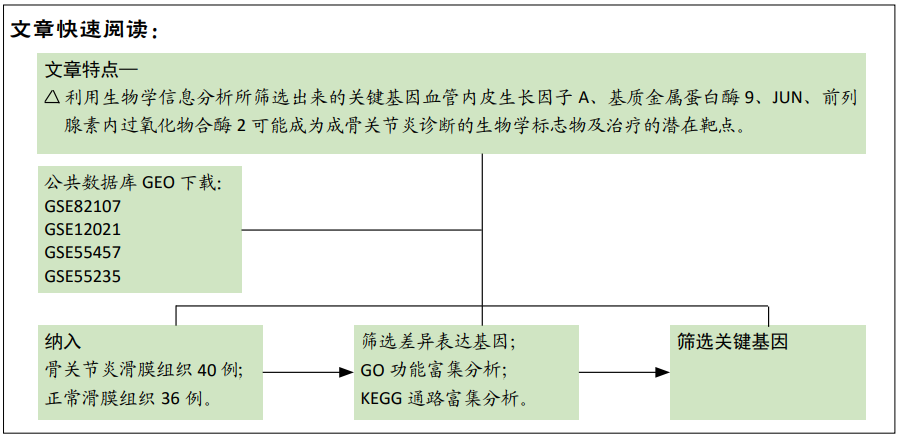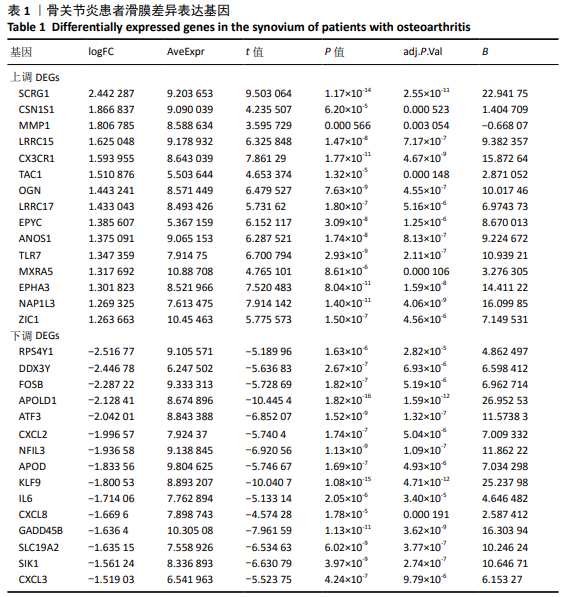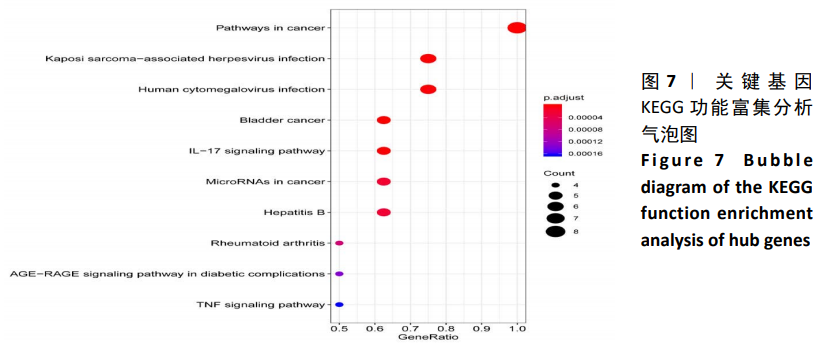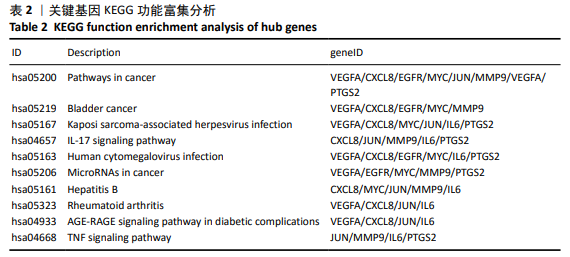[1] SCANZELLO CR, GOLDRING SR.The role of synovitis in osteoarthritis pathogenesis.Bone. 2012; 51(2): 249-257.
[2] SELLAM J, BERENBAUM F.The role of synovitis in pathophysiology and clinical symptoms of osteoarthritis. Nat Rev Rheumatol.2010;6(11): 625-635.
[3] ZELZER E, OLSEN BR.Multiple roles of vascular endothelial growth factor (VEGF) in skeletal development, growth, and repair.Curr Top Dev Biol.2005;65: 169-187.
[4] CHEN XY, HAO YR, WANG Z, et al.The effect of vascular endothelial growth factor on aggrecan and type II collagen expression in rat articular chondrocytes.Rheumatol Int.2012;32(11): 3359-3364.
[5] ZHAO W, CAO L, YING H, et al.Endothelial CDS2 deficiency causes VEGFA-mediated vascular regression and tumor inhibition.Cell Res.2019;29(11): 895-910.
[6] ZENG GQ, CHEN AB, LI W, et al.High MMP-1, MMP-2, and MMP-9 protein levels in osteoarthritis. Genet Mol Res.2015;14(4): 14811-14822.
[7] MEHANA EE, KHAFAGA AF, EL-BLEHI SS,The role of matrix metalloproteinases in osteoarthritis pathogenesis: An updated review.Life Sci. 2019;234: 116786.
[8] KIM KS, CHOI HM, LEE YA, et al.Expression levels and association of gelatinases MMP-2 and MMP-9 and collagenases MMP-1 and MMP-13 with VEGF in synovial fluid of patients with arthritis. Rheumatol Int.2011;31(4): 543-547.
[9] LERNER UH.Osteoclasts in Health and Disease. Pediatr Endocrinol Rev.2019;17(2):84-99.
[10] REDLICH K, HAYER S, RICCI R, et al. Osteoclasts are essential for TNF-alpha-mediated joint destruction. J Clin Invest. 2002;110(10): 1419-1427.
[11] ISLAM S, KERMODE T, SULTANA D,et al. Expression profile of protein tyrosine kinase genes in human osteoarthritis chondrocytes. Osteoarthritis Cartilage.2001;9(8): 684-693.
[12] RHEE J, PARK SH, KIM SK, et al.Inhibition of BATF/JUN transcriptional activity protects against osteoarthritic cartilage destruction. Ann Rheum Dis.2017;76(2):427-434.
[13] WU MH, TSAI CH, HUANG YL, et al.Visfatin Promotes IL-6 and TNF-alpha Production in Human Synovial Fibroblasts by Repressing miR-199a-5p through ERK, p38 and JNK Signaling Pathways.Int J Mol Sci. 2018;19(1). pii: E190.
[14] YANG F, ZHOU S, WANG C, et al.Epigenetic modifications of interleukin-6 in synovial fibroblasts from osteoarthritis patients.Sci Rep. 2017;7: 43592.
[15] MACHADO CRL, RESENDE GG, MACEDO RBV, et al.Fibroblast-like synoviocytes from fluid and synovial membrane from primary osteoarthritis demonstrate similar production of interleukin 6, and metalloproteinases 1 and 3. Clin Exp Rheumatol.2019;37(2):306-309.
[16] FERNANDES MT, FERNANDES KB, MARQUEZ AS, et al.Association of interleukin-6 gene polymorphism (rs1800796) with severity and functional status of osteoarthritis in elderly individuals. Cytokine.2015;75(2):316-320.
[17] RADOJČIĆ MR, THUDIUM CS, HENRIKSEN K, et al.Biomarker of extracellular matrix remodelling C1M and proinflammatory cytokine interleukin 6 are related to synovitis and pain in end-stage knee osteoarthritis patients.Pain.2017;158(7):1254-1263.
[18] SHIMURA Y, KUROSAWA H, TSUCHIYA M, et al. Serum interleukin 6 levels are associated with depressive state of the patients with knee osteoarthritis irrespective of disease severity. Clin Rheumatol. 2017;36(12): 2781-2787.
[19] LEE AS, ELLMAN MB, YAN D,et al.A current review of molecular mechanisms regarding osteoarthritis and pain. Gene.2013;527(2): 440-447.
[20] HUANG GS,TSENG CY,LEE CH,et al.Effects of (-)-epigallocatechin-3-gallate on cyclooxygenase 2, PGE(2), and IL-8 expression induced by IL-1beta in human synovial fibroblasts.Rheumatol Int. 2010;30(9): 1197-1203.
[21] YANG P, TAN J, YUAN Z, et al.Expression profile of cytokines and chemokines in osteoarthritis patients: Proinflammatory roles for CXCL8 and CXCL11 to chondrocytes.Int Immunopharmacol, 2016; 40:16-23.
[22] JIA H, MA X, TONG W, et al.EGFR signaling is critical for maintaining the superficial layer of articular cartilage and preventing osteoarthritis initiation. Proc Natl Acad Sci U S A.2016; 113(50): 14360-14365.
[23] JIA H, MA X, TONG W, et al EGFR Signaling: Friend or Foe for Cartilage? JBMR Plus.2019; 3(2): e10177.
[24] SUN H, WU Y, PAN Z, et al.Gefitinib for Epidermal Growth Factor Receptor Activated Osteoarthritis Subpopulation Treatment.EBioMedicine.2018;32:223-233.
[25] ZHANG X, ZHU J, LIU F, et al.Reduced EGFR signaling enhances cartilage destruction in a mouse osteoarthritis model. Bone Res. 2014;2:14015. |









